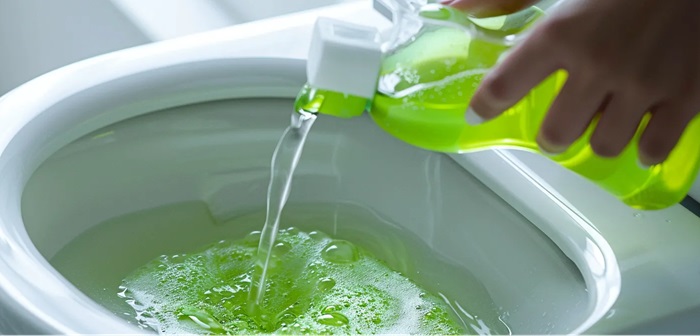
A clean toilet is essential for maintaining a healthy bathroom environment, as toilets can harbor waste and bacteria that lead to unpleasant odors and unhygienic conditions. While commercial cleaning products often claim to tackle these issues, many contain harsh chemicals that can harm the environment. By embracing eco-friendly alternatives, such as borax and homemade cleaners, anyone can effectively sanitize their toilet without compromising water and air quality. Eco-conscious cleaning boosts hygiene and contributes to a more sustainable lifestyle. Keep reading to discover practical tips and guidance on selecting eco-friendly products, crafting your homemade solutions, and adopting best practices for a greener toilet cleaning routine.
Key Takeaways
- Choose eco-friendly cleaning products with biodegradable ingredients to minimize environmental impact.
- Utilize concentrated formulas to cut down on shipping emissions and improve sustainability.
- Homemade green cleaners using common ingredients can effectively maintain toilet cleanliness without harsh chemicals.
- Establish a regular cleaning routine to deter grime buildup and promote a pristine bathroom.
- Minimize water usage during cleaning to conserve resources and prevent chemical runoff.
Selecting Eco-Friendly Cleaning Products

Making conscious decisions about cleaners is essential for a sparkling toilet seat and the environment. Individuals should look for products with biodegradable ingredients, which break down naturally, posing less harm to ecosystems. Choosing cleaning solutions packaged in recycled materials is also wise, as it minimizes landfill waste. Concentrated formulas can be an excellent choice, reducing shipping emissions by utilizing less fluid while retaining effectiveness. Before finalizing selections, verifying environmental safety certifications ensures that chosen products meet stringent health care and eco-friendly standards, putting users at ease while maintaining the pressure on cleanliness without compromising the planet's well-being.
Types of Toilets
Regardless of what type, you want to use the best, healthiest cleaning products.
Identify Biodegradable Ingredients
When selecting eco-friendly cleaning products, identifying biodegradable ingredients is a pivotal step. These ingredients minimize the risk of harmful infections by breaking down naturally and reducing toxic residue, contributing to a cleaner bathroom atmosphere. An effective eco-friendly cleaning process may also involve using a squeegee for cleaning floor surfaces efficiently, ensuring that any products used align with a sustainable approach, even when paired with conventional items like toilet paper.
Opt for Packaging Made From Recycled Materials
Choosing bathroom cleaning products that utilize packaging made from recycled materials significantly contributes to environmental sustainability. These eco-conscious containers help reduce waste while tackling dirt and odor on surfaces such as tiles. By prioritizing products in recycled packaging, individuals promote a cleaner bathroom environment and enhance overall cleanliness without compromising ecological principles.
Choose Concentrates to Reduce Shipping Emissions
Concentrating concentrated cleaning products effectively reduces shipping emissions, as these formulations require significantly less volume than traditional cleaners. By minimizing transportation costs and frequencies, the environmental footprint associated with each shipment decreases significantly, leading to less hydrogen release from vehicle emissions. Additionally, these concentrated solutions maintain high sanitation standards, effectively cleaning surfaces such as sinks and carpets while eliminating unwanted organisms without harming the planet.
Verify Certifications for Environmental Safety
Verifying environmental safety certifications is crucial for consumers who prioritize hygiene and sustainability in their cleaning products. Carefully reading labels can provide insights into how frequently a product adheres to safety standards, ensuring it can effectively combat issues like hard water buildup in showers. Additionally, recognizing these certifications helps avoid harmful chemicals often found in some products, which can behave similarly to medication regarding environmental impact.
Choosing eco-friendly cleaning products is a great start, but why stop there? Unleashing your creativity through crafting homemade green cleaners can further elevate your cleaning routine!
Crafting Homemade Green Cleaners
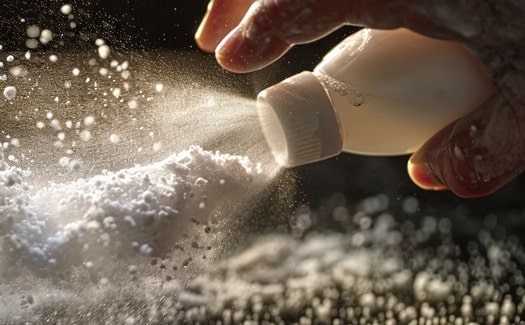
Creating homemade green cleaners allows individuals to maintain pristine toilet conditions without relying on harsh chemicals that can lead to soil and contamination issues. Combining baking soda and vinegar creates a foaming action that tackles tough grime, especially in grout lines and under the toilet rim. Additionally, lemon mixed with salt is a natural abrasive, effectively removing stains and neutralizing odors, all while leaving floors smelling fresh. A solution made from tea tree oil can combat mold and mildew, making it a valuable ally in promoting a healthy bathroom environment. Incorporating Castile soap into cleaning routines enhances the effectiveness of these natural cleaners, ensuring thorough sanitation while minimizing exposure to harmful substances. Using personal protective equipment during these cleaning tasks is advisable for optimal safety, as even natural products can irritate if mishandled.
Combine Baking Soda and Vinegar for Powerful Cleaning
Combining baking soda and vinegar creates a powerful cleaning duo that effectively tackles tough stains in the toilet tank and bowl. The reaction between these two ingredients produces carbonic acid, which helps dissolve grime without the need for harsh chemicals. Users should pour the mixture into a bucket and apply it with a brush, ensuring all surfaces are reached while avoiding the chance of burns that can occur with more abrasive cleaners.
Use Lemon and Salt for Stains and Odor
Lemon and salt effectively combat stubborn stains and odors in the toilet bowl. The acidity in lemon juice and the abrasiveness of salt allow for a thorough clean, particularly when applied with a toilet brush to scrub away the buildup. For added freshness, homeowners can use a towel or linen to wipe down surfaces afterward, ensuring the area maintains a crisp scent. This can be enhanced further with a spritz of hand sanitizer for disinfecting.
Create a Tea Tree Oil Solution to Combat Mold
Creating a tea tree oil solution is the best practice for combating mold in bathroom environments, particularly in areas where moisture can accumulate, such as on porcelain surfaces. Mixing a few drops of tea tree oil with water in a spray bottle allows individuals to effectively treat mold or mildew spots, including those associated with urine buildup. For best results, applying this solution with a microfiber cloth enhances the cleaning process and contributes to a healthier bathroom atmosphere by minimizing harmful elements.
The Role of Castile Soap in Natural Toilet Cleaning
Castile soap is a versatile cleaner that enhances the effectiveness of natural bathroom cleaning routines. Its biodegradable formula aids in infection prevention and control by breaking down harmful pathogens without adding harsh chemicals to the environment. Additionally, using castile soap in combination with other natural ingredients provides a refreshing air freshener effect, leaving spaces not only clean but also pleasantly fragrant.
Now that you've mastered creating your green cleaners, it’s time to discover how to use them effectively. Unleash the full potential of your homemade solutions with these best practices that ensure a sparkling, eco-friendly clean.
Best Practices for Using Green Cleaning Solutions
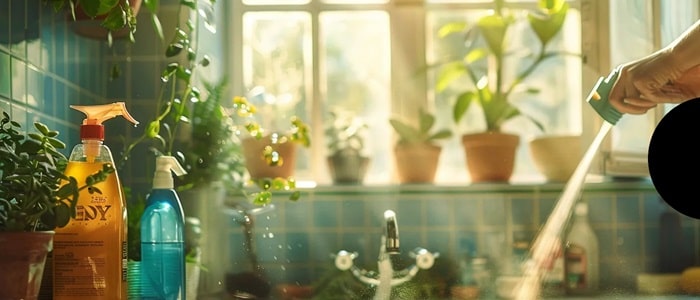
Understanding best practices for using green cleaning solutions significantly enhances the efficiency of maintaining a clean and healthy bathroom. Mastering correct dilution ratios, particularly when incorporating hydrogen peroxide or vinegar, ensures optimal strength without residual damage. Applying cleaning solutions that allow for sufficient dwell time maximizes their effectiveness, targeting grime in hard-to-reach areas, including those often overlooked in corners or beneath the toilet seat. Employing proper scrubbing techniques helps protect sensitive surfaces, such as porcelain and countertops, from scratches while still delivering a thorough clean. Finally, rinsing methods are critical in preventing residue buildup, which can impact the appearance and hygiene of the surfaces cleaned with environmentally friendly toilet cleaners. A systematic approach fashioned around these principles paves the way for success in maintaining your bathroom's cleanliness using natural solutions.
Correct Dilution Ratios for Effective Cleaning
Correct dilution ratios are essential for effective cleaning, especially when using mineral-based solutions or soaps. Paying attention to the recommended measurements ensures that the cleaning agents produce the desired results without leaving residue or causing damage. Combining powders or liquids with water to the correct specifications helps maintain their potency while ensuring safety during hand-washing procedures.
- Utilize appropriate ratios to enhance cleaning effectiveness.
- Focus on the relationship between water and cleaning agents.
- Avoid damaging surfaces by following guidelines closely.
Applying Solutions for Optimal Dwell Time
Applying cleaning solutions effectively involves allowing sufficient dwell time for the disinfectant to penetrate and neutralize debris within the room. This means users should leave the solution on surfaces for a designated period, typically five to fifteen minutes, depending on the product and task. Factors such as mat thickness and type of soil present can influence the required wait time for optimal results.
- Toilet bowl - 10 minutes dwell time. Use a solution that can tackle hard water stains.
- Bathroom counter - 5 minutes dwell time. Choose a solution designed for disinfecting surfaces.
- Floor mat - 15 minutes. Spray liberally and allow deep cleaning for max effect.
Techniques for Scrubbing Without Damaging Surfaces
To maintain pristine surfaces during cleaning, users must adopt gentle scrubbing techniques to prevent damage. Soft-bristled brushes and microfiber cloths are ideal for tackling dirt and dust while being safe for delicate surfaces like porcelain and acrylic, including bathtubs. Additionally, incorporating a vacuum cleaner can effectively remove loose debris before applying any cleaning solutions, ensuring that scrubbing efforts focus only on adhered grime.
- Select appropriate cleaning tools, such as soft brushes and microfiber cloths.
- Use a vacuum cleaner to remove loose dust and debris first.
- Apply gentle pressure while scrubbing to avoid scratching surfaces.
Rinsing Methods to Prevent Residue
Effective rinsing methods are essential for minimizing residue buildup after cleaning with green solutions. Individuals should utilize clean, warm water and thoroughly rinse surfaces to ensure no cleaning agent remains, which could attract dirt or compromise hygiene. Additionally, employing a separate cloth for rinsing can help avoid cross-contamination and maintain a pristine environment in the bathroom.
As green cleaning solutions transform your approach to home care, taking the next step toward sustainability means updating your tools. Discover how sustainable tools for toilet cleaning not only enhance your efforts but also promote a healthier environment.
Sustainable Tools for Toilet Cleaning
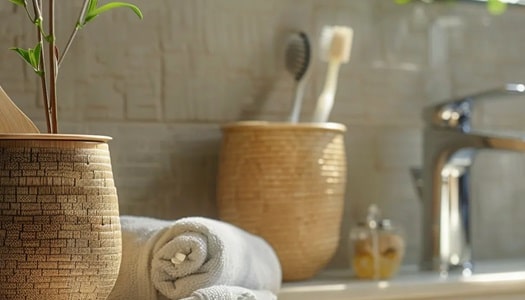
Choosing sustainable tools for toilet cleaning plays a vital role in maintaining an eco-friendly bathroom. A bamboo toilet brush, for instance, offers a biodegradable alternative to traditional plastic options, ensuring minimal environmental impact while effectively tackling dirt and grime. Complementing this, reusable cleaning cloths reduce waste significantly compared to disposable alternatives, providing a practical solution for continued use without compromising cleanliness. Additionally, selecting a durable holder made from recycled plastic further enhances sustainability efforts, creating a harmonious balance between functionality and eco-consciousness. Together, these tools contribute to a greener cleaning routine, aligning with the goals of environmentally aware individuals.
Why Choose a Bamboo Toilet Brush
Opting for a bamboo toilet brush presents a sustainable choice that aligns with eco-conscious cleaning practices. Bamboo, a fast-growing and renewable resource, ensures that this alternative minimizes environmental strain compared to conventional plastic brushes. By incorporating a bamboo bathroom tool into cleaning routines, users contribute to reducing plastic waste while maintaining effective cleanliness.
- Bamboo is biodegradable, making it an environmentally friendly option.
- Using a bamboo brush reduces reliance on plastic materials.
- Bamboo has natural antibacterial properties, enhancing hygiene efforts.
The Benefits of Reusable Cleaning Cloths
Using reusable cleaning cloths offers significant environmental advantages compared to disposable options. These cloths reduce waste, as they can be washed and reused multiple times, significantly decreasing the volume of materials in landfills. Additionally, their durability allows for thorough cleaning while maintaining the hygiene needed for bathroom upkeep.
Selecting a Durable, Recycled Plastic Toilet Brush Holder
Selecting a durable, recycled plastic toilet brush holder is important in fostering sustainable bathroom practices. This type of holder reduces reliance on single-use plastics and ensures long-lasting functionality, maintaining cleanliness while aligning with eco-friendly values. By incorporating recycled materials into bathroom accessories, individuals enhance their commitment to sustainability without sacrificing quality or aesthetics.
Ready to make a bigger impact? Discover how to enhance your toilet cleaning routine by reducing water usage!
Reducing Water Usage During Toilet Cleaning
Minimizing water usage during toilet cleaning is crucial for effective maintenance and environmental sustainability. Employing specific methods helps conserve this vital resource and significantly prevents chemical runoff that can contaminate local water systems. Adopting efficient cleaning routines, such as using targeted application techniques and selecting eco-friendly products that require less water, ensures thorough cleaning without excessive waste. Additionally, creating awareness around the impacts of chemical runoff highlights the importance of choosing biodegradable and non-toxic cleaning solutions. These practices contribute to a cleaner bathroom and promote broader ecological health.
Methods for Minimizing Water in Cleaning Routines
Implementing targeted application techniques can significantly reduce water usage during toilet cleaning. For instance, spray bottles allow for precise distribution of cleaning solutions, minimizing excess liquid while effectively tackling stains and odors. Additionally, employing cloths or reusable pads rather than traditional mop techniques can enhance control over water usage, ensuring a thorough cleaning without unnecessary waste.
The Importance of Preventing Chemical Runoff
Preventing chemical runoff is critical in safeguarding local ecosystems and maintaining water quality. When harmful substances from cleaning agents enter the water supply, they can disrupt aquatic life and contaminate drinking water sources. Individuals can effectively reduce the risk of chemical runoff and contribute to a healthier environment by selecting biodegradable and eco-friendly cleaners.
Transform your toilet cleaning routine into an eco-friendly mission. Discover how regular green practices can keep your toilet sparkling clean while being kind to the planet.
Maintaining a Clean Toilet With Regular Green Practices
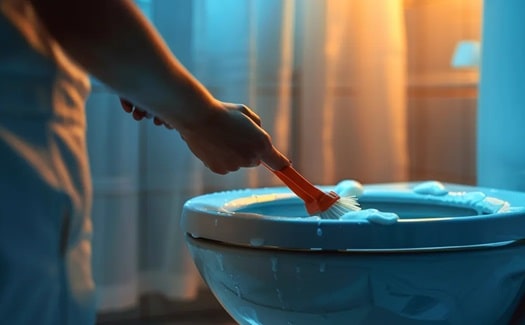
Establishing a routine for toilet maintenance is vital for sustaining cleanliness while employing eco-friendly practices. Scheduling frequent, lighter cleanings helps prevent the accumulation of grime and reduces the need for harsh deep-cleaning sessions. Daily habits, such as using a toilet brush regularly and flushing with care, further discourage build-up and promote a pristine environment. Moreover, understanding the challenges of hard water allows individuals to adopt natural solutions that mitigate mineral deposits. Addressing these issues proactively enhances the toilet's appearance and supports the overall health of the bathroom ecosystem.
Scheduling for Frequent, Lighter Cleanings
Establishing a routine for frequent and lighter cleanings substantially contributes to maintaining a clean and eco-friendly bathroom. Implementing short, daily tasks, such as wiping down surfaces and flushing with care, keeps the toilet in optimal condition and reduces the buildup of dirt and stains. This proactive approach encourages sustainability by minimizing the need for harsh, chemical-laden deep-cleaning sessions.
Tips for Preventing Build-Up With Daily Habits
Regularly incorporating quick cleaning habits can significantly deter build-up in the toilet. Simple actions, such as wiping down the seat and rim after each use, keep grime at bay and reinforce cleanliness. By flushing carefully and promptly addressing any spills or splashes, individuals can maintain a fresh toilet environment while supporting their broader eco-friendly cleaning efforts.
The Impact of Hard Water and How to Address It Naturally
Hard water can present significant challenges in maintaining a clean toilet. Mineral deposits accumulate over time, leading to unsightly stains and reduced effectiveness of cleaning products. To combat this issue naturally, individuals can use solutions like vinegar or citric acid, which effectively dissolve mineral buildup without harming the environment. Regular application of these natural substances, coupled with proactive cleaning habits, helps keep toilets pristine while minimizing the impact of hard water.
Conclusion
The "Green Guide to Toilet Cleaning Mastery" emphasizes the significance of eco-friendly practices in maintaining a clean bathroom. By selecting biodegradable products, using sustainable tools, and adopting efficient cleaning techniques, individuals contribute to environmental health while ensuring hygiene. Regular routines and natural solutions help prevent grime buildup and combat hard water issues effectively. This guide empowers users to create a cleaner, healthier space without compromising their commitment to sustainability.
For specific directions on how to clean a toilet, read this article. PlumbersStock has all the toilets, toilet parts, and bathroom accessories you need to get your setup right.



